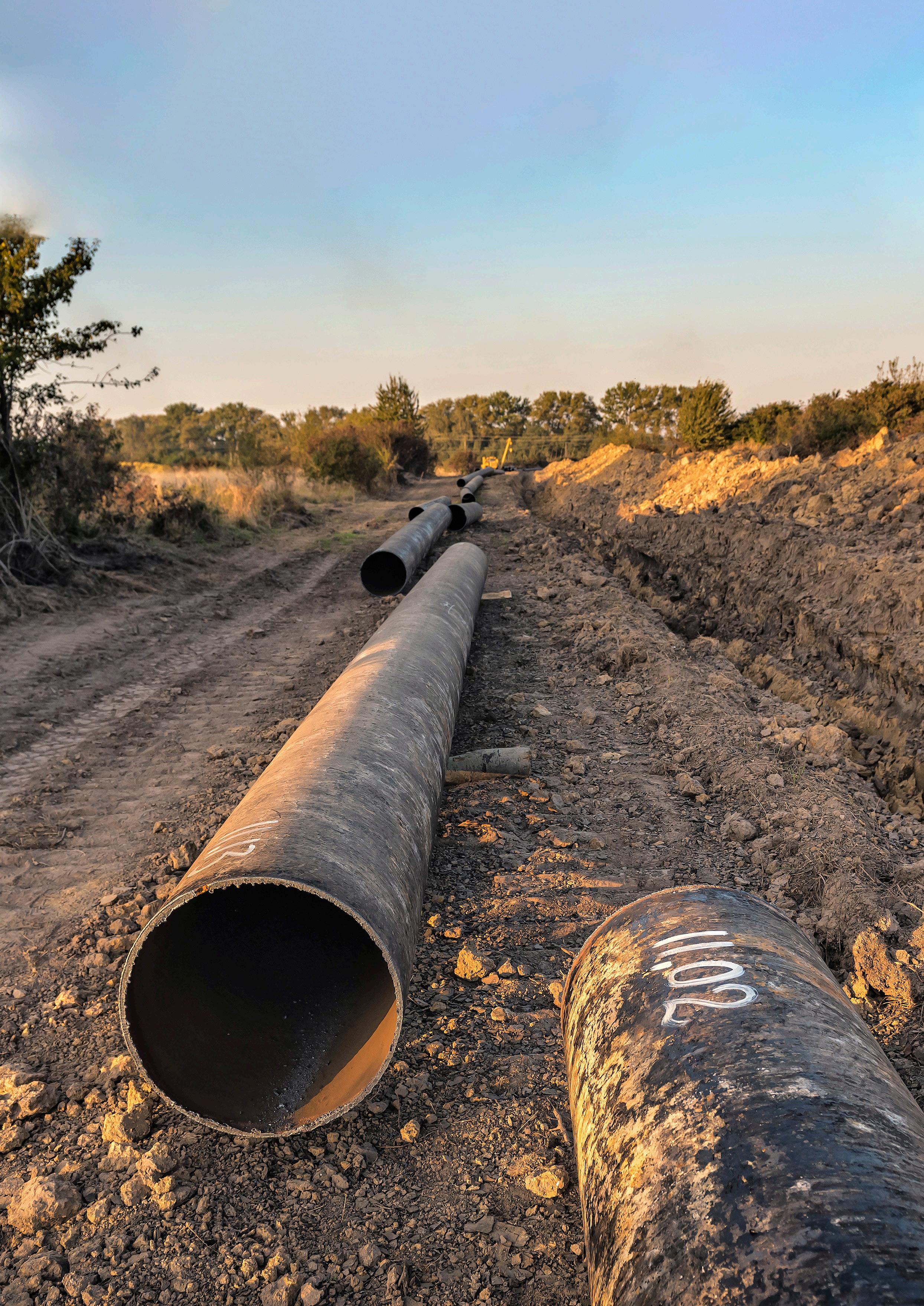
3 minute read
Grounded in safety
Neil McKnight, Senior Business Development Manager, T.D. Williamson, UK, discusses pigging in the hydrogen take-off.
Governments and policy makers are increasingly turning to hydrogen to counter the twin challenges of carbon emission reduction and energy security. Plans for hydrogen-carrying pipeline networks are being expedited and expanded. It’s clear, however, that repurposing existing gas lines must form a significant portion of this effort, as much as 60% in the case of Europe. As such, hydrogen will be increasingly present in pipelines in the coming decades.
In anticipation, the industry has focused on finding ways to protect pipeline infrastructure from degradation associated with hydrogen exposure, including embrittlement of commonly used pipe materials. But we have to be equally committed to safeguarding the people working onsite, including those who execute pigging operations.
Hydrogen risks Pigging delivers the diagnostic and remediation solutions to keep pipeline networks healthy. As pipelines are converted from methane to hydrogen, any legacy flow assurance and integrity issues not completely rectified will be carried forward. In these instances, pigging with hydrogen present in the line will be necessary.
In any pigging operation, launching and receiving pigs is the most safety-critical aspect, requiring breaking of containment and introducing the potential for volatile gas mixtures to form. The properties of hydrogen exacerbate these risks. Compared to methane, hydrogen has a significantly larger flammability range, far lower ignition energy and is difficult to contain, with a propensity to find leak paths. Hydrogen’s lower calorific value means that to deliver equivalent energy, pipelines will need to be operated at higher pressures and flowrates.
Competence and controls How do we begin to mitigate hydrogen risks for safe pigging operations? Optimised worksite and equipment design, an informed and educated workforce and robust operational controls are a sound foundation. ) Personnel must have the opportunity to understand the hazards of working with hydrogen and receive written plans regarding the operation, management and maintenance of the worksite.
) Proper ventilation and the elimination of ignition sources are priorities. It’s also important to consider neighboring activities as potential sources of ignition or impact.
) Before attempting any insertion or retrieval of pigs, critical valves must be fit for purpose and validated as not bypassing. The same level of verification should apply before mobilising any temporary equipment.
) Once a pig is moving through the line, hydrogen’s low density and compressibility make it more difficult to control tool velocity and can exaggerate speed excursions. This must be carefully managed to ensure they reach the receiver in a controlled manner.
) Debris that is displaced intentionally by cleaning tools or unintentionally during inspection or isolation can create additional hazards. Pyrophoric black powder can auto-ignite in the presence of air when the pig trap closure is opened, and high volumes of debris in the receiver can result in undetected trapped pressure.
) It is standard practice in methane lines to purge launchers and receivers with inert gases to displace volatile gas mixtures. Hydrogen increases the window of possibility for an explosive atmosphere to be present and the effectiveness of this process must be confirmed. Additional diligence is needed due to hydrogen’s volatility when displacing and venting.
Recompression or controlled flaring is required.
Safety equals success We are entering an era of rapid expansion of hydrogen into pipeline networks. Currently, if hydrogen is in a pipeline it will be operated by industrial gas specialists with suitable expertise and planning of operations. However, as we see a democratisation of hydrogen into our broader gas networks, exposure will become part of our pigging crews’ regular work. It is paramount that this transition achieves its necessary goals without critical incidents involving frontline workers. As an industry we need to share knowledge, plan appropriately and educate our operational teams.

Figure 1. The strongest defences begin with design.

Figure 2. Pigging plays a central role in pipeline integrity management and optimising throughput.

Figure 3. Launching and receiving is the most safety critical aspect of any pigging operation.










